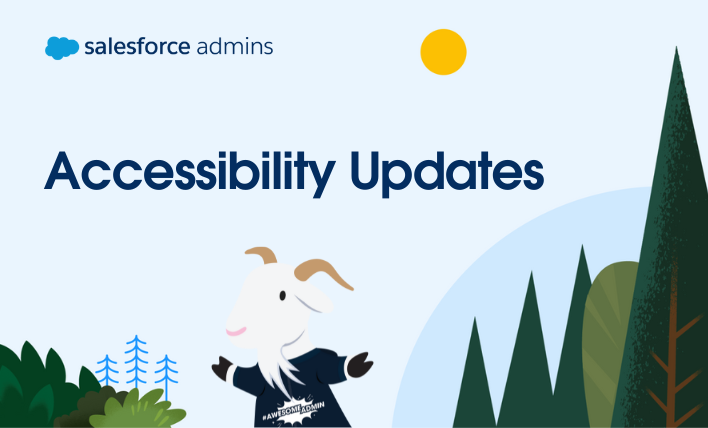This blog was updated on May 4, 2020 with relevant new details.
Admins, we know that one of the ways you deliver success is by building custom experiences for your users. You can ensure that your users get the right information, in the right way, at the right time, with customized Lightning pages.
We heard you, and we’re excited to share Dynamic Forms with you! Dynamic Forms is the next step in the evolution of Lightning record pages. It adds a step of point-and-click customization for your Lightning record pages that previously required custom coding.
The more fields on your page layout, the more the Record Detail component becomes a monolithic block of uncustomizable fields. Until now.
With Dynamic Forms, you can migrate the fields and sections from your page layout as individual components into the Lightning App Builder. Then, you can configure them just like the rest of the components on the page, and give the users of that page only the fields and sections that they need. Migration isn’t the only path, however. You can also build your pages from scratch.
Sounds great, right? Dynamic Forms benefits you in these ways:
- An instant upgrade from page layouts: Place fields and sections wherever you want.
- Better page performance: Put fields and sections into accordion components or tabs to significantly improve page load times.
- Dynamic layouts: Use visibility rules to show and hide fields and sections.
- Simpler layout management:
- Manage the fields and sections on your pages in the Lightning App Builder without touching the page layout editor.
- Reduce the number of page layouts you need with component visibility rules.
- Take advantage of a single assignment model for the Lightning page instead of the dual model of assigning a Lightning page and a page layout.

How Does Dynamic Forms Work?
Dynamic Forms works only on custom object record pages for now, and support for standard objects is on the roadmap for GA.
Dynamic Forms adds some new features to the Lightning App Builder. You see a new Fields tab in the left-hand components pane. And, the Fields tab contains the fields associated with your custom object and a Field Section component.

There are two ways you can start using Dynamic Forms. For new record pages, after you create the page, don’t bother with a Record Detail component. You can immediately drag Field Section components and fields onto the page.
The great thing about Dynamic Forms is that it’s flexible. You can rearrange, organize, and even place sections in tabs!
For existing record pages, you could start by dragging fields and sections, but there’s a much easier way. Open your page in the Lightning App Builder, click the Record Detail component, and you see a new area at the top of the Record Detail properties pane.

Click Upgrade Now to start the Dynamic Forms migration wizard. Walk through the wizard, and select which page layout has the fields that you want to migrate to the page.
Why choose a page layout when the Fields tab has all the fields you need? Well, the upgrade wizard takes the fields and sections from the page layout you choose and automatically adds them to your page. Just a few clicks and you’re done. No need to drag all those fields manually.
As part of the migration process, the Record Detail component is removed from the page, leaving you with fields and sections that you can configure and place anywhere you like.

But that’s not all. As you add, remove, and configure fields and sections, you’ll get help from new in-app tips, created exclusively for Dynamic Forms-driven pages.
What About Mobile?
The new Field Section component and the Field components that go inside it are desktop-only. But your mobile users are still covered.
We mentioned previously that on migrated pages, we remove the Record Detail component. What does that mean for mobile users if the new Dynamic Forms fields and sections are supported only for desktop? Will they see an empty page? Not at all. We also added a new Record Detail – Mobile component so that your mobile users can still have access to the record detail information on pages that use Dynamic Forms. This new component is available on pages that support both the desktop and phone form factors.
If you migrate an existing page to Dynamic Forms, we add the Record Detail – Mobile component to the page for you. If you’re working on a fresh page that supports both desktop and phone, you’ll need to add the Record Detail – Mobile component to the page yourself.
The Record Detail – Mobile component wraps fields from the existing Record Detail component into a mobile-only container. So, on pages that support both desktop and phone, your desktop users see Field Section components, and your mobile users see the Record Detail – Mobile component.
Here’s an example of what a page that you create in desktop mode in the Lightning App Builder looks like when viewed on a phone. The Field Section components just below the Highlights Panel on desktop are dropped on mobile, and the Record Detail – Mobile component takes over to deliver the sections and fields.

TIP: You can set visibility rules on page components already. Because fields and field sections are also components, you can set visibility rules on them too, making your page even more dynamic for your users.
Resources
Dynamic Forms is a Non-GA Preview for Summer ’20. Want to give it a spin? When Summer ’20 arrives in your org, you can enable Dynamic Forms yourself in Setup. We can’t wait to hear your feedback.










